Polanco is a large residential area in Mexico City, centred on Chapultepec Park. Established by the Aztec ruler Nezahualcoyotl in the 15th century, the park is the largest green area in Mexico City. Together with the neighbourhood of Polanco, this is Mexico City's most exclusive area. This area boasts many notable museums, antique shops, luxury shopping, fine dining and nightlife, and upscale hotels, making it ideal for discovering contemporary Mexican culture. I invite you to take a walking tour of this neighbourhood and learn more about it. Let’s begin with a visit to the Soumaya Museum.
Soumaya Museum
The Soumaya Museum was founded by Carlos Slim Helu, Mexico's richest man, and is named after his late wife, Soumaya Domit. Between 2010 and 2013, Forbes ranked Slim as the wealthiest man in the world. Slim knew that many citizens of his country could not afford to travel to Europe to see European art, so he decided to bring it to Mexico City instead. The museum was originally opened at Plaza Loreto in 1994 and is still operating today. However, in 2011, the main collection was moved to a new building in Plaza Carso.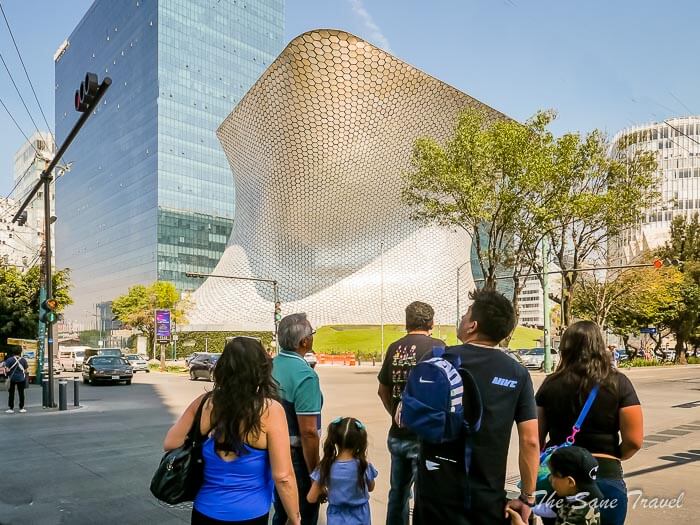
This six-storey museum building is covered with 16,000 hexagonal aluminium tiles. The reflective features of the tiles give the building a different appearance depending on the weather, time of day, and the viewer’s vantage point. The non-profit museum, which features more than 64,000 works of art, conducts research, conservation, and promotion of Mexican and European art through permanent, temporary, and travelling exhibitions.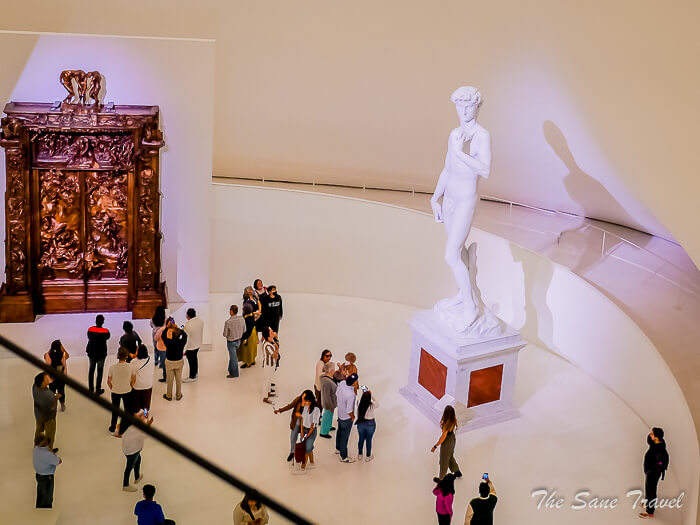
The Soumaya Museum collection contains sculptures from Pre-Hispanic Mesoamerica, 19th- and 20th-century Mexican art, and an extensive collection of works by European old masters, including Lucas Cranachs, Tintoretto, El Greco, Peter Paul Rubens, and Murillo.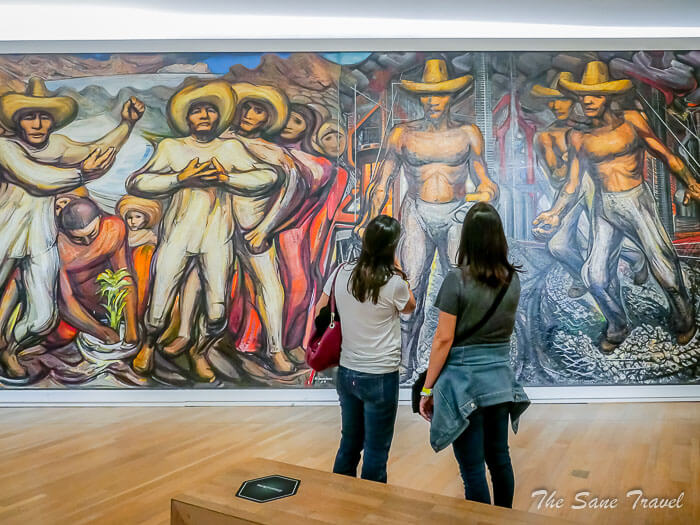
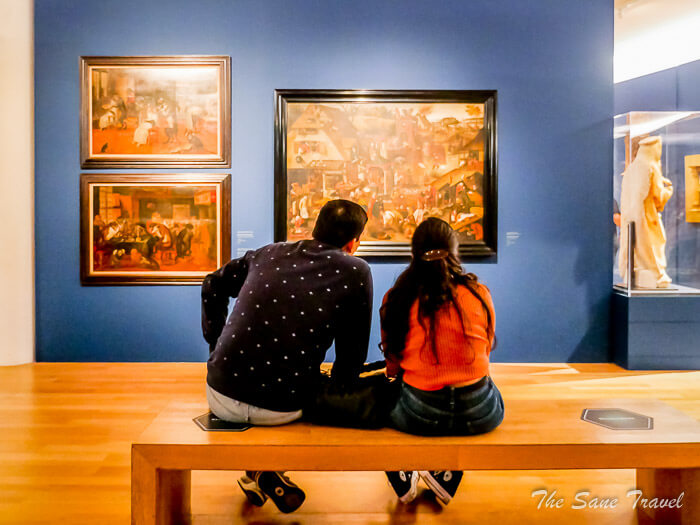
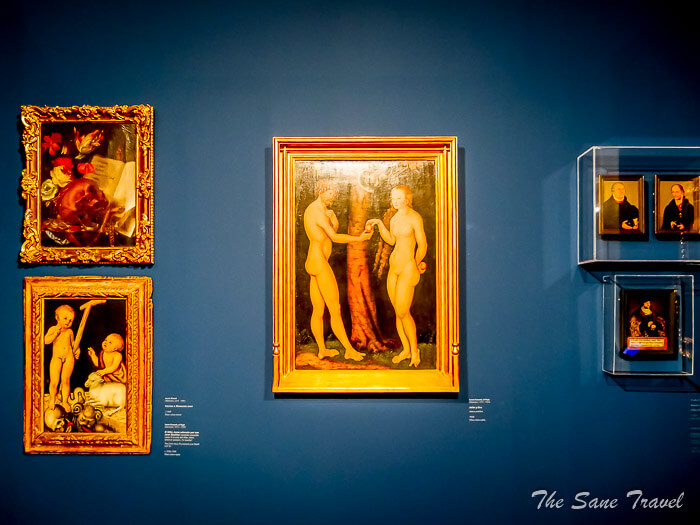 Masters of modern Western art include Eduard Manet, Claude Monet, Pierre-Auguste Renoir, Edgar Degas, Vincent van Gogh, Marc Chagall, Salvador Dali, and Auguste Rodin. The museum holds the largest collection of casts of sculptures by Auguste Rodin outside France.
Masters of modern Western art include Eduard Manet, Claude Monet, Pierre-Auguste Renoir, Edgar Degas, Vincent van Gogh, Marc Chagall, Salvador Dali, and Auguste Rodin. The museum holds the largest collection of casts of sculptures by Auguste Rodin outside France.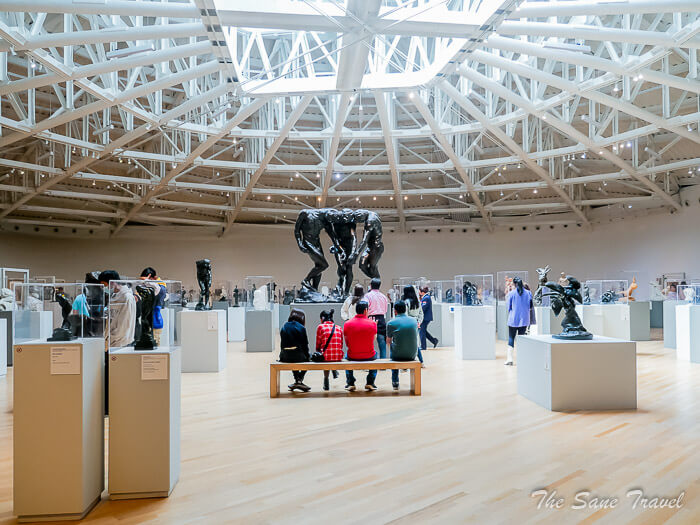
Address: Boulevard Miguel de Cervantes Saavedra 303, Granada, Miguel Hidalgo
If you are interested in modern art, visit the nearby Jumex Museum. It houses one of Latin America's largest private contemporary art collections, which includes works by Andy Warhol, Martin Kippenberger, Cy Twombly, and Damien Hirst.
After visiting the museum, continue your walk along F. C. de Cuernavaca Avenue and notice Mexico City Aquarium. 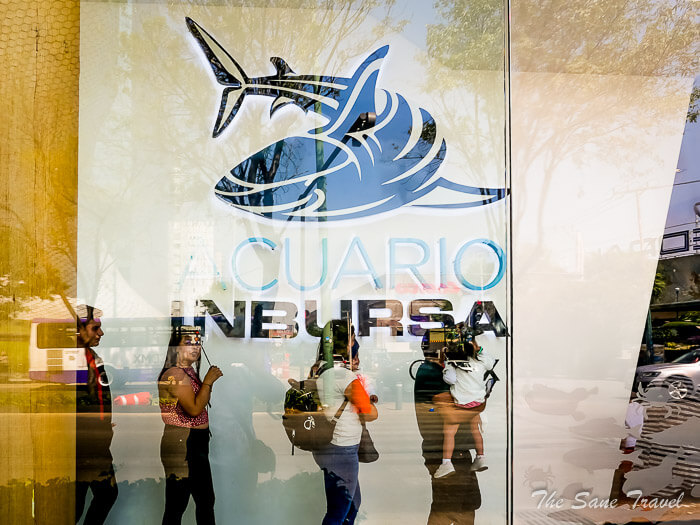 Then take Plinio Street. After a while, turn left onto Horacio Avenue and meet the bear, Berlin's symbol, near the entrance of the Embassy of Germany.
Then take Plinio Street. After a while, turn left onto Horacio Avenue and meet the bear, Berlin's symbol, near the entrance of the Embassy of Germany.
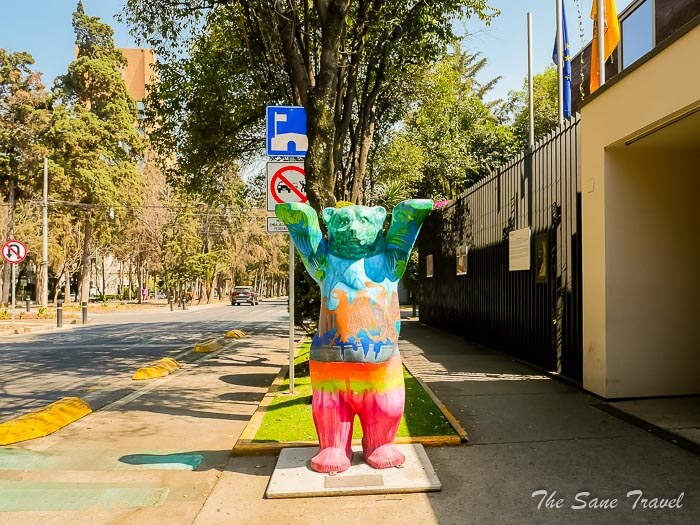
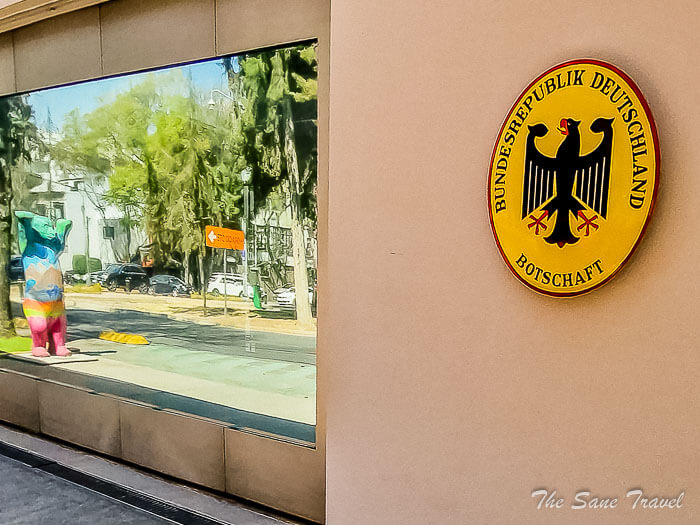
Address: Horacio No. 1506, Col. Los Morales Sección Alameda, Delegación Miguel Hidalgo.
Then turn left again onto Sofocles Street and walk until you reach Presidente Masaryk Avenue. Even if you only walk a short part of it, you should know something about this street.
Presidente Masaryk Avenue
Presidente Masaryk Avenue, the main artery of Mexico City, is named after the first president of Czechoslovakia, Tomas Garrigue Masaryk. Some of the city's best high-rise hotels are located there. The avenue is also famous for its luxury shopping and dining. It is the most expensive street in all of Mexico and, together with Madero Avenue in the historic centre, has the highest rents in the city.
Then turn left onto Jorge Bernard Shaw Street until you reach Campos Eliseos Avenue and turn left again.
Campos Eliseos Avenue
Located in the Polanco area, this avenue, along with Presidente Masaryk Avenue and Moliere Avenue, is one of the city's most famous streets. It is a beautiful tree-lined avenue that houses many hotels and residences. 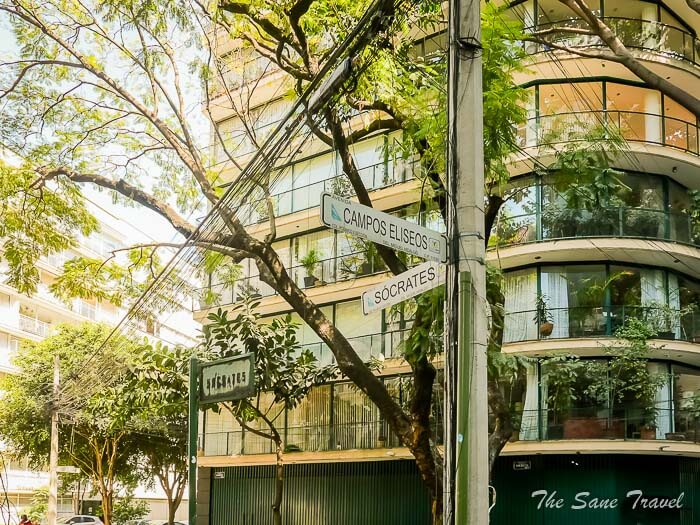
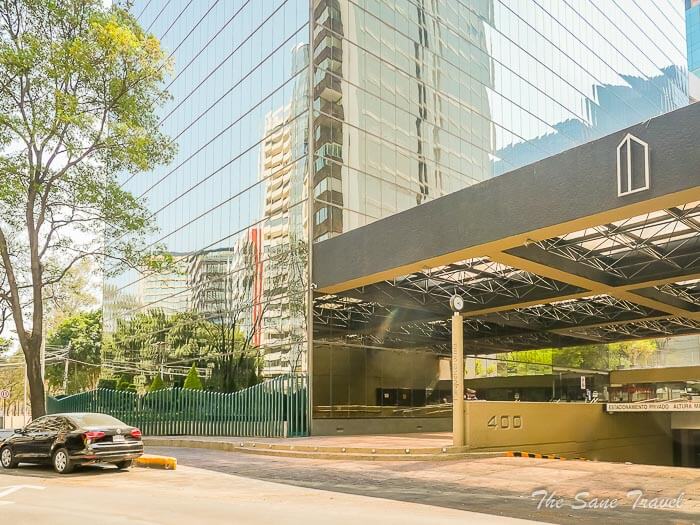
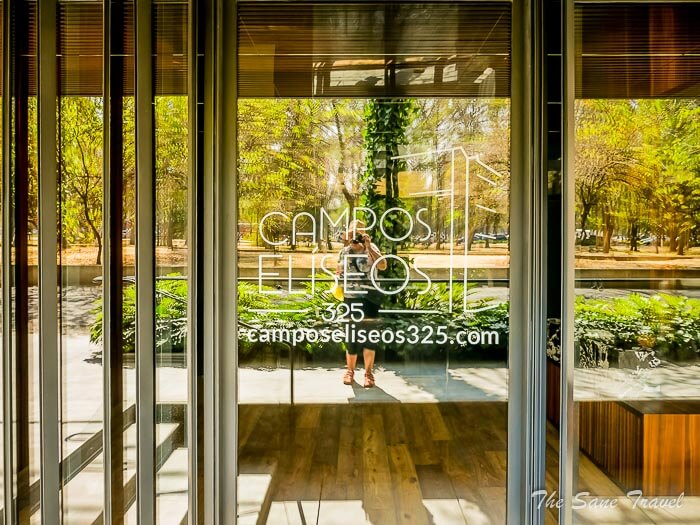
The Polanco River, which gives its name to this neighbourhood, used to flow along this avenue. To the west, it borders the Parque Libano (English: Lebanese Park), named for the Lebanese Embassy.
After a while, you will reach Paseo de la Reforma.
Paseo de la Reforma
The elegant Paseo de la Reforma surrounds Mexico City from west to northeast connecting the National Palace with Chapultepec Castle. The avenue was built during the reign of Emperor Maximilian, who ruled Mexico from 1864 to 1867. The major overhaul in 2003 converted Paseo de la Reforma into one of the major attractions of Mexico City and sent land prices skyrocketing, making it the most expensive area in Mexico City. 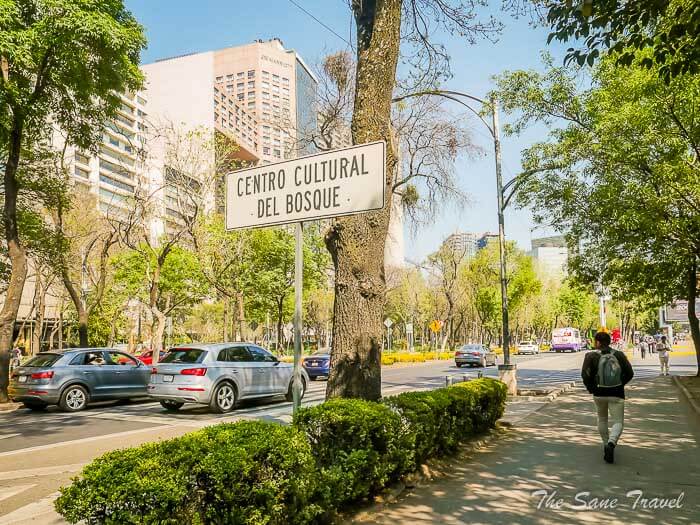 Walk along Paseo de la Reforma and admire the monuments, murals, and statues. Very soon you will notice the National Auditorium building.
Walk along Paseo de la Reforma and admire the monuments, murals, and statues. Very soon you will notice the National Auditorium building.
National Auditorium
Mexico City’s National Auditorium is the leading performance stage in the country. With more than 9,000 seats, it is a very large venue. The auditorium hosted many artistic and cultural events, such as the 1968 Olympics gymnastics competitions, from the sixties through the eighties. It also served as a venue for trade fairs, political and social events, and international beauty pageants. After remodelling, the building reopened in 1991 with a new stage for concerts and events. The auditorium nowadays hosts dance and ballet events as well as musical, cinema, and opera performances. It also hosts photography, painting, sculpture, and popular art exhibitions. 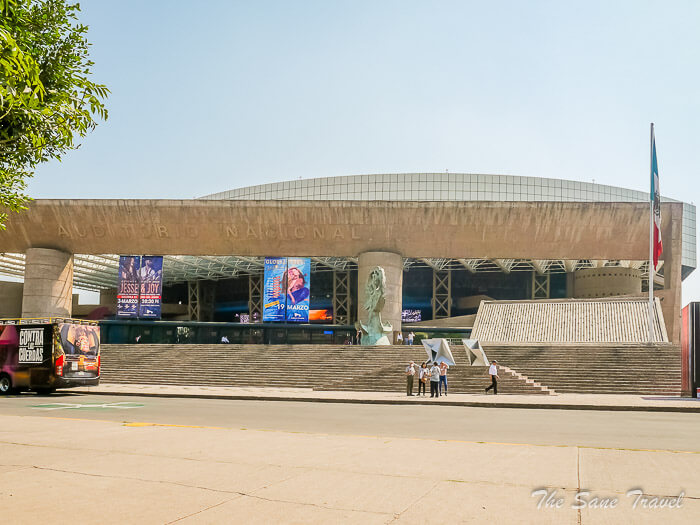
 The auditorium is home to the OMAN, the Monumental Organ of the National Auditorium. With 15,633 pipes, this organ is believed to be the largest in Latin America.
The auditorium is home to the OMAN, the Monumental Organ of the National Auditorium. With 15,633 pipes, this organ is believed to be the largest in Latin America.
Address: Av. Paseo de la Reforma 50, Polanco V Secc, Miguel Hidalgo.
After passing the National Auditorium, stop at the street market for some local food.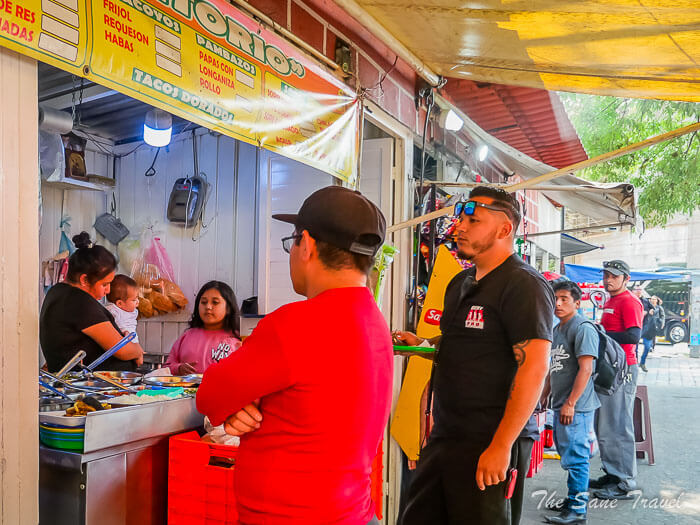
Also, notice the fascinating Korean Pavilion on your way.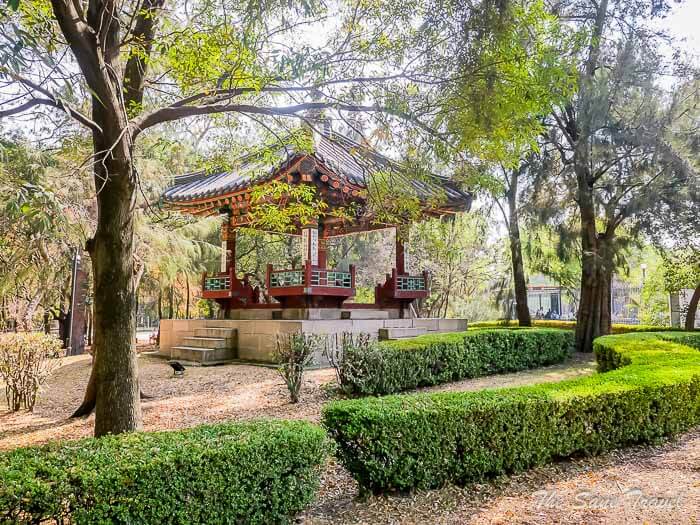
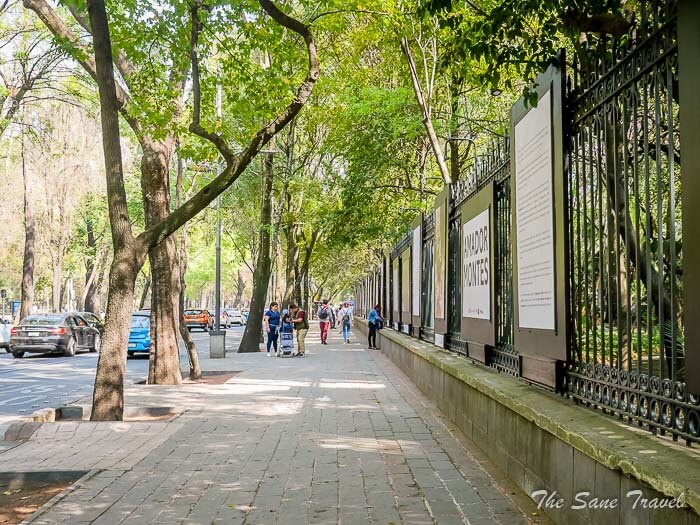 Soon you will reach Chapultepec Park.
Soon you will reach Chapultepec Park.
Chapultepec Park
Chapultepec means 'Hill of the Grasshoppers' in Nahuatl, the language of the Aztecs. Chapultepec Park is the oldest and largest urban park in Latin America and one of the oldest urban parks in the world. Originally sited on the outskirts of the city, this extensive forested area is now surrounded by the urban environment.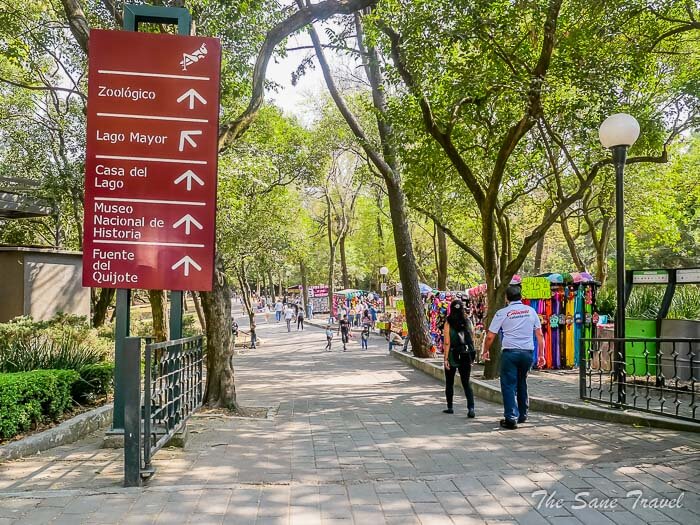
Many public figures such as Nezahualcoyotl, Moctezuma, Hernan Cortes, Maximiliano, Porfirio Diaz, and Lazaro Cardenas are directly connected to Chapultepec Park. During the colonial period, Chapultepec Castle took shape in the park and served as the official residence of Mexican presidents until 1940. The park contains a range of superb museums, a zoo, and venues for artistic and cultural activities. Rowboat and paddle boat rentals are available on the artificial lake in the park.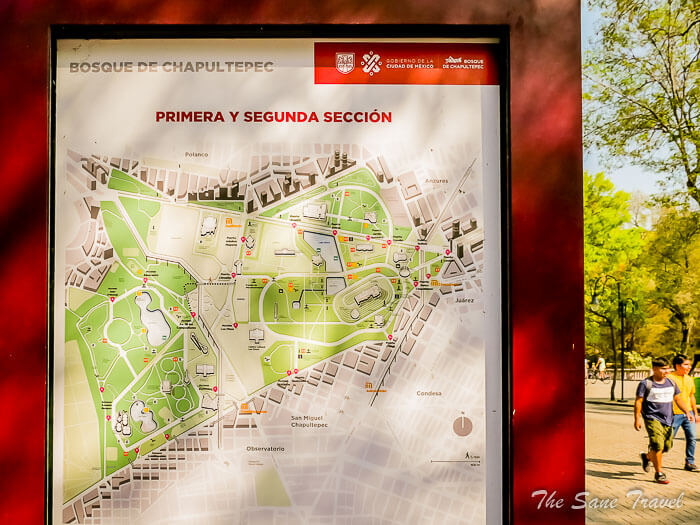
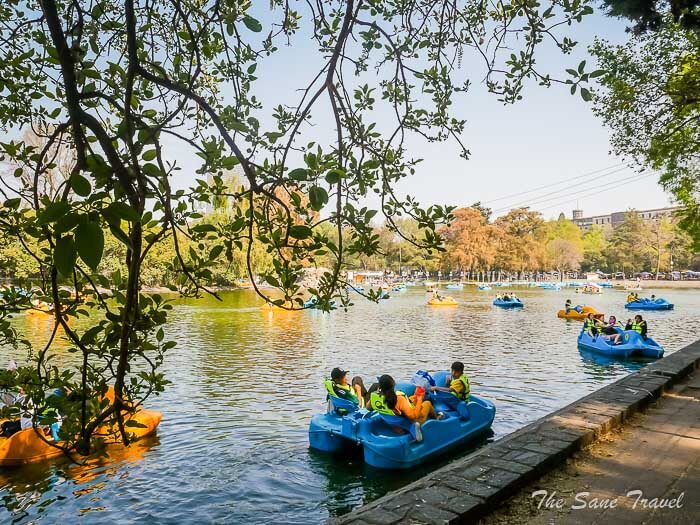
Ninos Heroes Monument
At the entrance of Chapultepec Park is an imposing monument that honours six teenage Mexican military cadets who died defending Mexico when the US army laid siege to Chapultepec Castle in 1847. The monument serves as a tribute to the cadets of the Military College who gave their lives to defend Chapultepec Castle from the US invasion in 1847.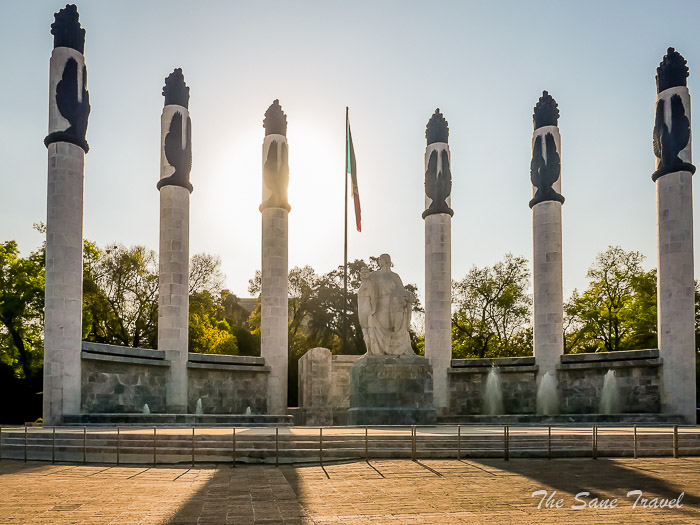
Chapultepec Castle
Construction of Chapultepec Castle began in 1785, but it became a castle only after Mexico gained independence. It was refurbished in 1864 and served as the home of Emperor Maximilian of Habsburg before becoming the residence of Mexico’s presidents in 1882. It remains one of two imperial palaces in North America.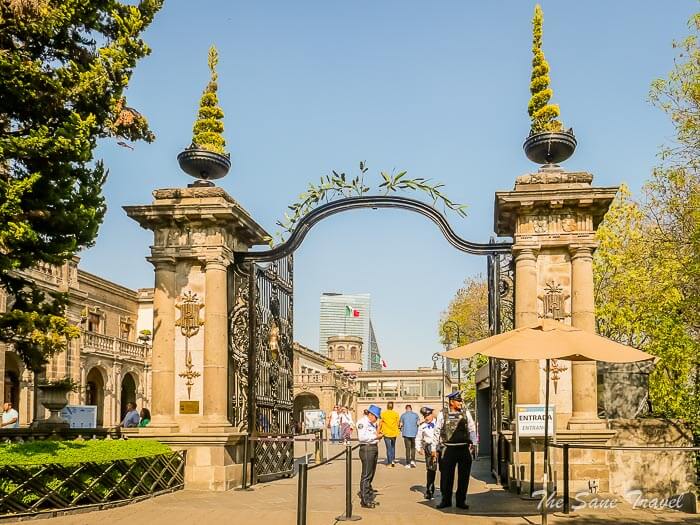
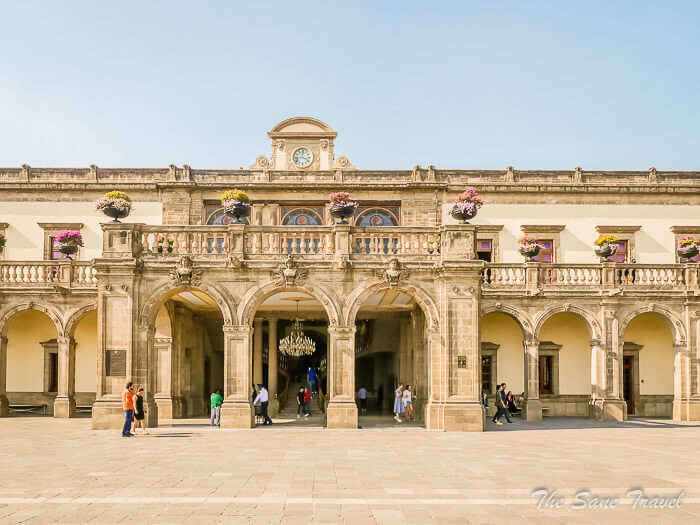
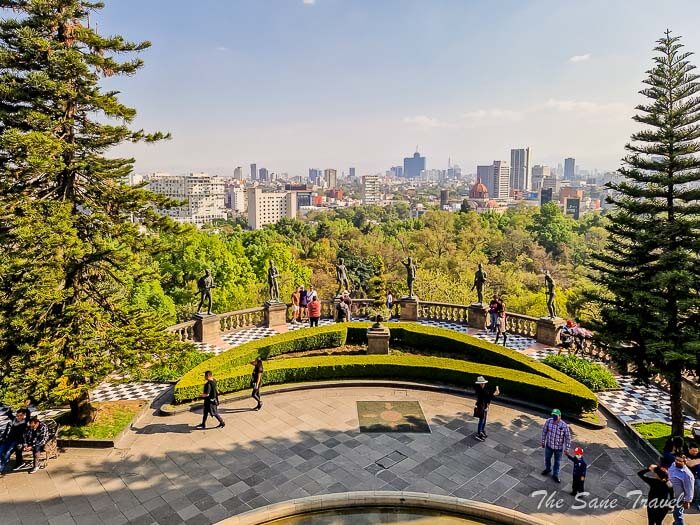
This castle witnessed one of the strangest political events of the 19th century when Archduke Maximilian of Austria acceded to the new imperial throne of Mexico in 1864. The emperor and his consort, together with their court, settled in Chapultepec Castle on the outskirts of the city. Architects were hired to renovate the 18th-century castle, and after the renovation, it was decorated with furniture and artworks from Europe. Just a few years later, after French troops withdrew from Mexico in 1867, he was defeated by the Republican forces of former President Juarez and was executed in 1867. The historic castle now hosts the National History Museum. Permanent collections include paintings, documents, technology, clothing, and furniture from multiple periods of Mexican history. 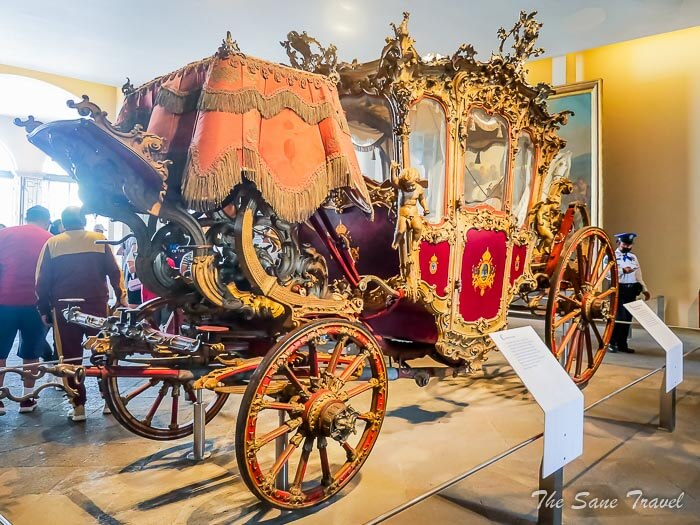
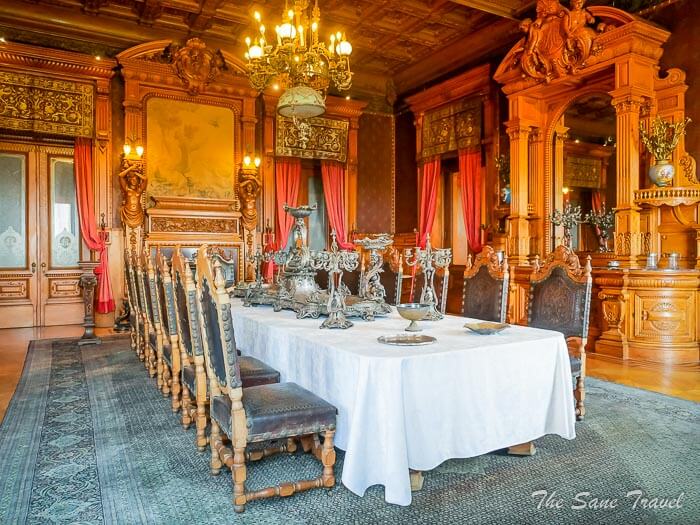
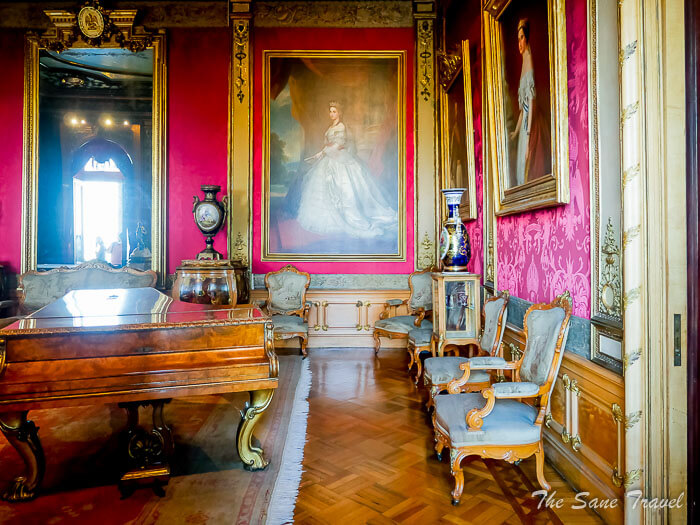
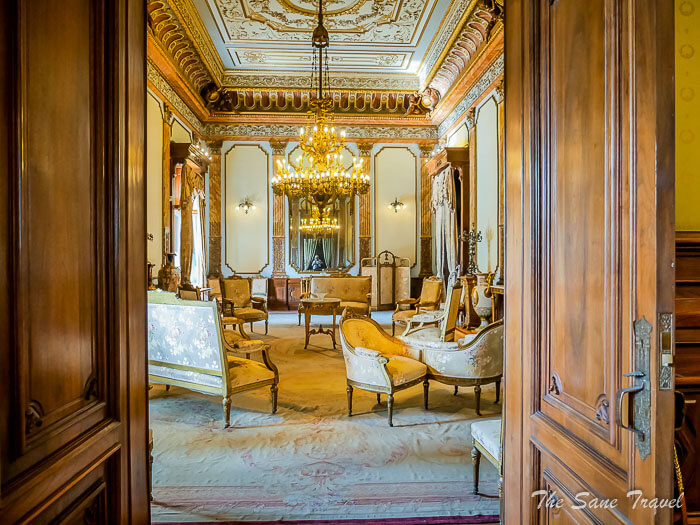
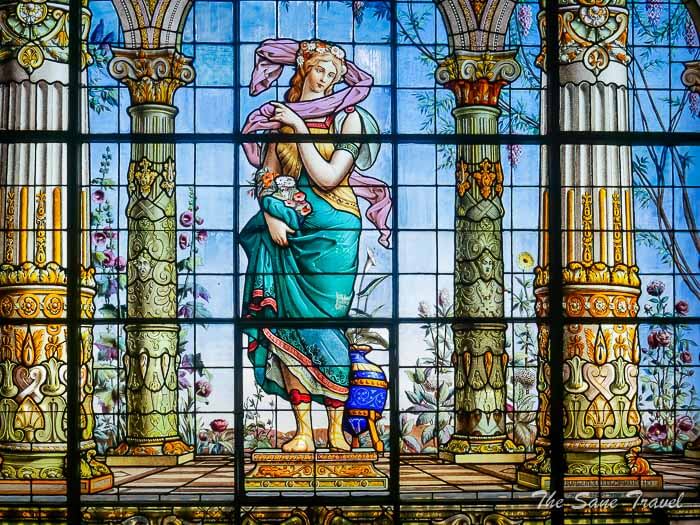
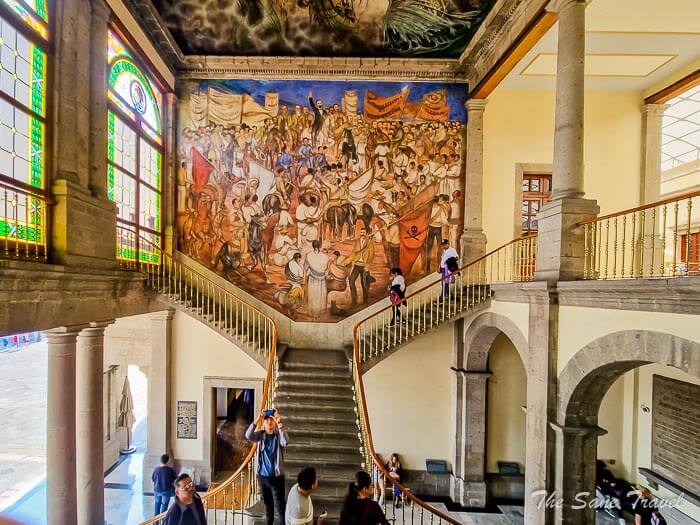
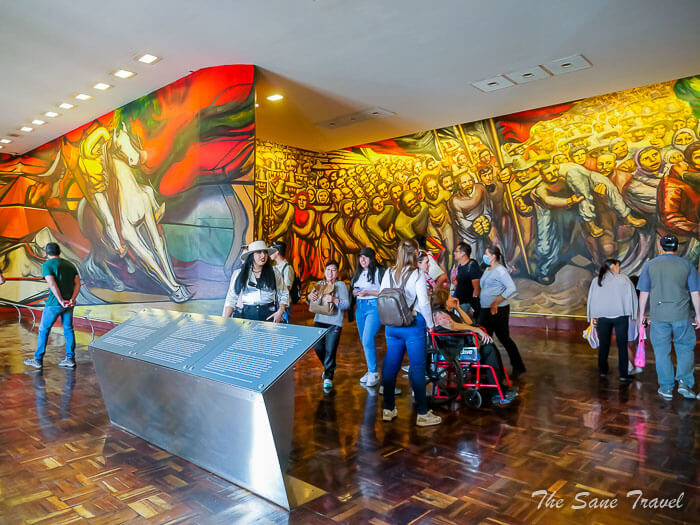
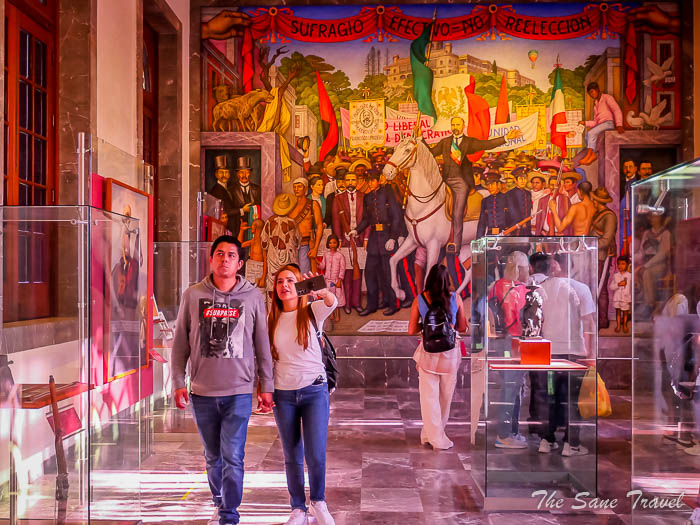 The National Museum of History also hosts concerts, conferences, and performing arts events.
The National Museum of History also hosts concerts, conferences, and performing arts events.
Practical information
The starting point of my walking tour was the Soumaya Museum, and I took an Uber to get there from the city centre as there was no metro station nearby. By the way, the famous National Museum of Anthropology is on the opposite side of Chapultepec Park. Unfortunately, I did not have the opportunity to visit the museum, but you are very welcome to do so. You can take the metro from Chapultepec station at the end of your walk. Even though the tour length is about five kilometres (3.10 miles), it can take you a full day because of museum and attraction visits. I recommend that you also take a self-guided walking tour of the Mexico City centre.
The map of the Walking tour
Like it? Pin it!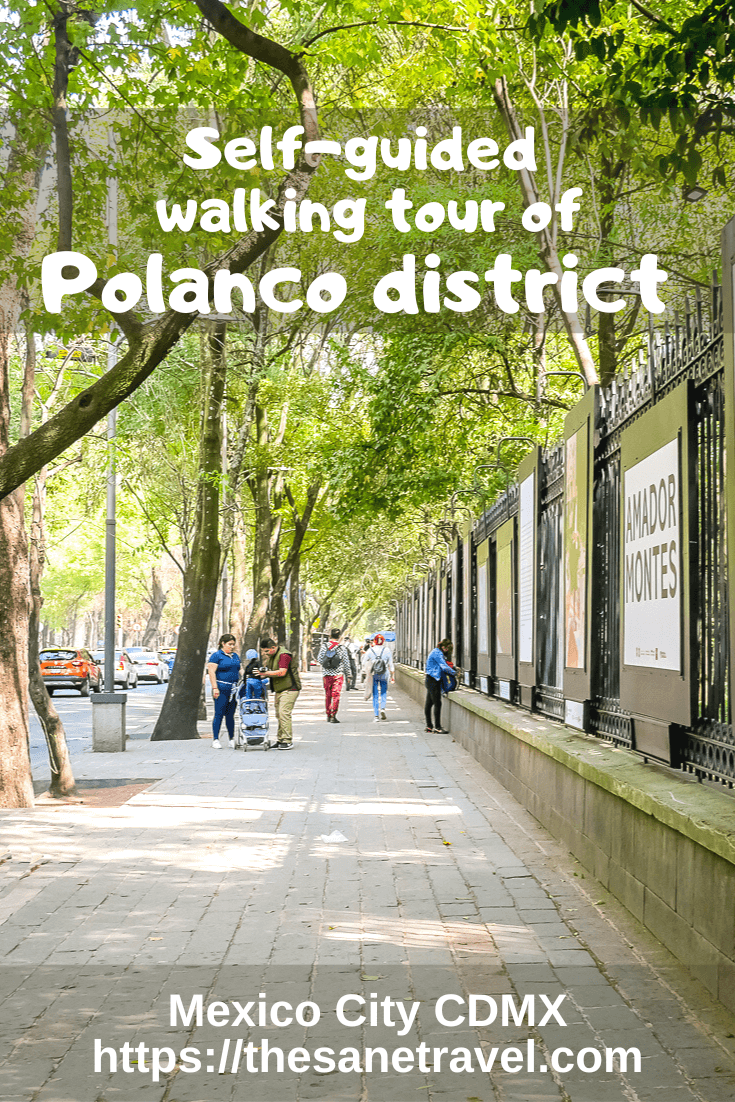
What did you think? Have you visited Mexico City? I would love to hear from you, so please add your comment below.
Author: Anita Sane

About the author
Anita is a part-time traveller, passionate photographer and a retired career woman from Latvia, travelling mostly solo for more than 15 years. She is a skilled travel planner who plans and executes her travels by herself. Anita wants to show you how to travel the world and open your mind to new experiences. Follow her on Facebook, Instagram, Pinterest, Twitter and Bloglovin.

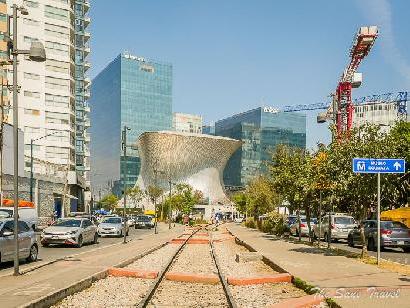
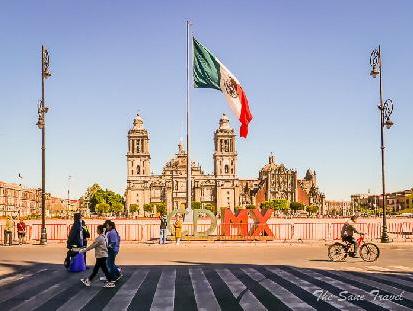
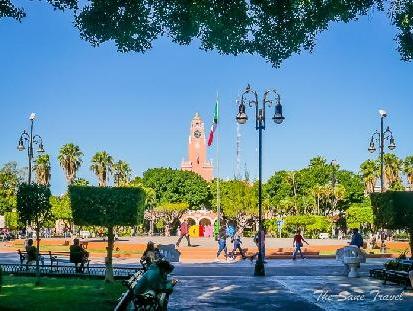
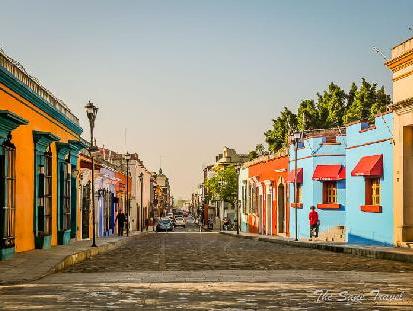
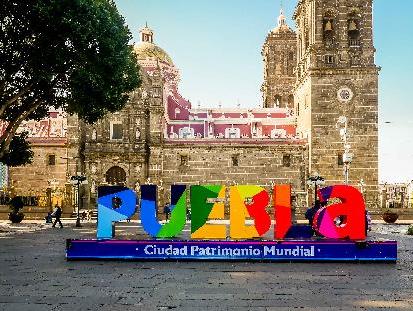
Report
My comments